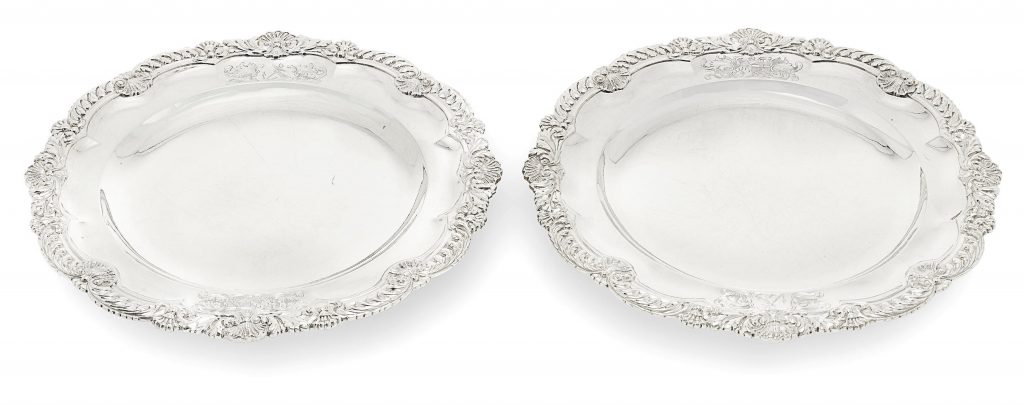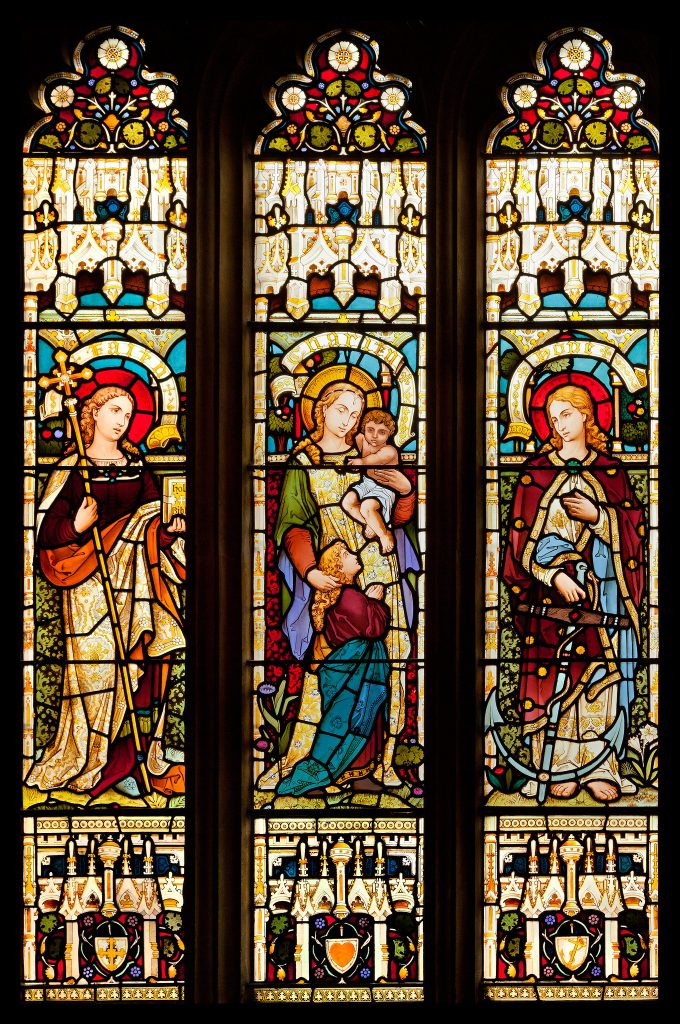A recent auction at Bonhams in London unearthed two solid silver plates from a collection in the United States. They have a direct connection with Kings Weston and tell us something of the wealth and taste of the owners of the house in the Victorian era.
During most of the Nineteenth Century Kings Weston was owned by the wealthiest family in Bristol: the Miles dynasty of merchants, bankers, and industrialists. It was bought in 1834 by Philip John Miles as a family home with his second wife, Clarissa Peach. After he died in 1845 Clarissa was well provided for in his will, and she continued to live at Kings Weston as dowager matriarch with several of her eleven grown children, until her own death in 1868.

It was during this last period of her life, after Philip’s death, that the two silver plates were commissioned. Probably once part of a much larger service these survivors were made by an important London silversmith, William Ker Reid, in 1855. Even at the time they would have been an extremely expensive luxury, testament to the incredible wealth of the family and their desire to express it.
The service was certainly commissioned for the tables of Kings Weston. We know that it was Clarissa who commissioned these plates because of the engraved arms on either side of the rim. On one side is the Miles family crest, an arm holding an anchor representing their maritime interests; opposite it Clarissa had her own family’s arms, that of the Peach family of Tockington, Gloucestershire, depicted. The shells incorporated in the border may also be allusions to the family’s connections with the sea. What is perhaps unusual is that Clarissa must have commissioned them herself for the house, rather than her son Philip William Skinner Miles as the heir to the Kings Weston estate; she clearly had a significant inheritance of her own.

Clarissa is a less well-known figure in the history of the estate. We have no image of her, and there are few documented mentions. These plates show she was a powerful woman in her own right and was able to commission high status objects. After she died in 1868 she was buried with her husband at Henbury church. It was here that her family chose to commemorate her life in a stained glass window. Depicted in it are personifications of Faith, Hope, and Charity. It’s probably not a coincidence that an anchor, here symbolising hope, is a prominent motif in the design.


